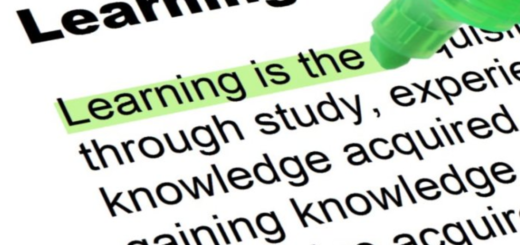Challenging Us All To Do Better
Today I would like to present everyone, including myself, a challenge. It is a challenge that my high school teachers failed at with me. I graduated with honors from a very good high school from all measures. I easily passed all the state mandated testing. I took numerous AP courses and was admitted to the competitive university of my choosing. I had teachers who filled me with knowledge so I could make an A on the test and then shortly after unceremoniously forget. By most standards I would be considered a success. However, what they failed at was installing a love of learning or even why that learning was important to me in my future other than to matriculate through our educational system. What they didn’t provide for me and what I am challenging all of us to offer our students is what Douglas Thomas and John Seely Brown characterize as A New Culture of Learning.
Challenge #1 – Move from Explicit to Tacit Learning
Thomas and Seely Brown contend that in the 20th century explicit learning prevailed. They define explicit learning as content that is easily identified, articulated, transferred and tested usually through direct instruction. They reason that this was abundant and important enough a concept to sustain an entire educational system. However, they argue that the 21st century belongs to tacit learning. They posit that in the digital world we learn by doing, watching and experiencing. We need to not only shift the learning in the classroom but also our personal learning from explicit to tacit.
Think about the last time you saw a student wait for professional development to learn a new computer program or video game. Yet how often do you hear a teacher say – “they gave us access to this Google Docs stuff but never trained us how to use it.” If you know how to use Microsoft Word you know the principles to use any word processing program. And if that’s not enough then “Let Me Google That For You.”
Now if we understand we all can learn on our own and we need to learn by doing in the digital age let’s move on to the next challenge.
Challenge #2 – Move from Classrooms to Learning Environments
We need to shift our culture from a teacher-based classroom to a learner-based learning environment. (Yes I hate “learner-based learning environment” but it can’t simply be student-based because we all have to be learners in this environment.) When students enter a new teacher’s classroom they often have to adjust to that teacher’s culture. The first day is often a time for the teacher to lay down the ground rules and hand out the syllabus. So in a teacher-based classroom the culture IS the environment. However in a learner-based learning environment, the culture emerges from the environment and grows with it. They liken it to a petri dish in a lab under controlled conditions. We know what topics we want to cover in the learning environment but we don’t necessarily know how we are going to get there.
The teacher-based environment also focuses on teaching us ABOUT the world. While a learning environment engages us IN the world. It is the difference that we are trying to highlight with our Entrepreneurial Track we have been investigating. Instead of simply teaching a business class that will educate students about this world. We intend to go a step further and jump into that world. We intend to create a learning environment in year two and beyond that throws them into the deep end and requires them to start their own business. Imagine the difference is theorizing about a business and actually creating one. We are going to give them controlled conditions and let them create their own petri dish.
This opens up the last difference highlighted by the authors between classrooms and learning environments. In classrooms students are required to prove they have received the information we intend to transfer to them. In learning environments what we learn simply leads to new questions we want to investigate. Will we ever know the best way to run our business? I highly doubt it but I know if we do it properly we will learn to ask new questions and grow as individuals incrementally and exponentially.
So how do we accomplish this new learning environment?
Challenge #3 – Move from Teachers to Farmers
So if we know that transferring explicit information inside a classroom isn’t enough then how do we make sense of learning in a world of constant change. First we realize that we have access to resources that will allow us to learn about anything we want. Second we need to create a structured environment with boundaries that allow for unlimited agency to build and experiment. Grant Lichtman does a great job of painting this picture of learning as farming in this Edutopia post. He explains that the farmer sets a fence line in which the growth can best take place. Then he points out how the farmer breaks up the hardest of the ground and removes the biggest rocks so the plants have the best soil to grow in. After all of that preparation, however, the farmer leaves the plants to do the rest. Periodically the farmer comes by with nutrients and some judicious pruning and weeding but for the most part the plants are responsible for their own growth.
So if we provide the safe learning environments with appropriate constraints, we can allow our students to explore topics through their passions. I have seen this personally happen in the blended economics class I taught last semester. We utilized EdPuzzle and Crash Course Economics to help “prepare the soil” outside of the classroom. Then we, myself and the students, brought in current events to discuss related to what we had learned the previous night in the videos. Thus we provided the nutrients for our plants to grow. Then the students had to grow themselves through synthesis of the concepts. They reflected on these economic topics in relation to their own passions through blog posts. So you want to learn about the principle of utility as it relates to macaroons go here, you want to learn about inflation and the global economy read more here or you can simply learn about game theory and wine snobbery here. These are weekly assignments that went well beyond the requirements simply because they were talking about topics they were interested in.
Granted I won’t lie that I had some very good plants to work with but I realized it and provided them a great garden in which they could grow. This brings me to my last challenge…
Challenge #4 – Move from Complaining about Geographic Illiteracy to Finding Iraq
One of my favorite examples in the book talks about studies performed in 2006 and 2008. In 2006 a survey found that 63% of Americans ages 18 to 24 couldn’t find Iraq on a map of the Middle East. They declared an epidemic of “geographic illiteracy.” Two years later one of the authors did a similar experiment with 18 undergraduate students. Yet he made one substantial change. He sat them in front of a computer and said “Find Iraq.” Now the students could not only find Iraq but also ask him if he wanted it in map form or satellite imaging, the whole country or just a particular region. The authors suggest today’s students have shifted from a “what” version of information to a “where” version. “Where” now involves an ever-changing shifting of context while simply knowing “what” comes into question. In our information economy, expertise is less about having a bunch of knowledge stockpiled in your brain and more about understanding how to acquire the most current, accurate information and deploy it to communicate your thesis.
This brings me back to thinking about what our students are doing with their grant proposals in our technology and engineering classes. They were required to use their imagination and come up with a project they were passionate about. They had to follow the budgetary and physical constraints that were placed upon them but they are shining. They are “Finding Iraq” in so many ways. To see students prototyping with cardboard before cutting out the MDF for their desktop arcade is great to witness. Then hearing another group of students lamenting the fact that they 3D printed the undercarriage of their remote control car to wide to support their servos and now have to redesign makes me smile.
At the end of the day I challenge us all to not simply be satisfied with producing compliant students like me who knew how to play the game of school. We can do better for our kids. We have to do better for our future.
Resources
Lichtman, G. (2015, January 20). Teacher as Farmer. Retrieved November 20, 2016, from https://www.edutopia.org/discussion/teacher-farmer
Thomas, D., & Brown, J. S. (2011). A new culture of learning: Cultivating the imagination for a world of constant change. Lexington, KY: CreateSpace?


